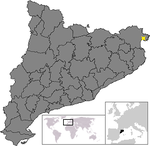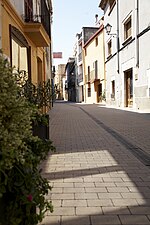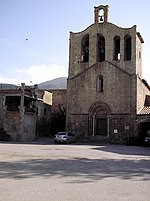Castelló d'Empúries
Municipalities in Alt EmpordàProvince of Girona geography stubs

Castelló d'Empúries is a town and municipality in the Alt Empordà in Girona, Catalonia, Spain. It lies 9 km east of Figueres. In 1079, Castelló d'Empúries became the capital of the Empúries county due to the previous capital, Sant Martí d'Empúries, being too easily sacked by pirates. 1325-1341 saw a period of large expansion of this capital town, which ultimately ceased being the capital once the county joined the Crown of Aragon in 1385. The old town is somewhat dwarfed by the neighboring urbanisation of Empuriabrava, on the coastline of the Costa Brava.
Excerpt from the Wikipedia article Castelló d'Empúries (License: CC BY-SA 3.0, Authors, Images).Castelló d'Empúries
Plaça de la Moneda,
Geographical coordinates (GPS) Address Nearby Places Show on map
Geographical coordinates (GPS)
| Latitude | Longitude |
|---|---|
| N 42.258333333333 ° | E 3.075 ° |
Address
Plaça de la Moneda
Plaça de la Moneda
17486
Catalonia, Spain
Open on Google Maps











